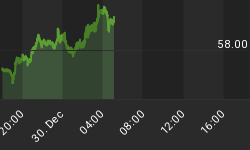LET'S LOOK AT THE FTSE

Last week I used this chart and pointed out the very bullish pattern that had developed. But I thought there was a possibility it could break the pattern early in the week. I reported if it couldn't break the July low within the first two days of the week it wasn't going to occur and there would be a powerful low in place. The first day of the week rallied and thus made it impossible to break the low within two days and the index was off and running. Again what made the pattern so powerful was a higher double bottom at 50% of the range having previously been broken and showing that support at a high level in relation to the low. The index has NOW reached the "last low before the final high" and is a key resistance level. Friday's wide range and strong close will likely need to be consolidated with a small correction. I cannot give you a forecast until I see this weeks trading.
LET'S LOOK AT THE S&P 500 WEEKLY CHART

I've boxed off the previous bullish consolidation that consisted of a weak trend down. Weak trends are usually followed by fast trends in the opposite direction. Weak trends can be easily identified because every time they break to new highs or new lows the market will immediately reverse and not get legs in the direction of the trend. You can see that exact circumstance during the 2004 consolidation. You can see the struggle down that is currently going on now.
LET'S LOOK AT THE DAILY CHART

You can see how the index broke the May low in June but immediately rallied back well above that low with a 13-day rally. The next thrust down held the "obvious" June low. Many of the other indexes as the NASDAQ, RUSSELL & S&P Midcap all showed marginal breaks and a recovery indicating a complete wave structure or complete leg down. Last week on my website I published some analysis all the tops and bullish consolidation for the Dow Industrials for the past 70 years and a couple conclusions were obvious. Once that initial leg down is complete, no matter if a top or a bullish consolidation the index has pretty much set in the range for the next 6 to 9 months. There could be a marginal new high in the S&P 500 possibly 1260 or a new low to 1192, but the range has been established for the next ½ year at least. One of the keys to this pattern is how the index goes into the time window of 90 calendar days from high on 6 August. Remember the high was a 90-day time period low to high. The FTSE was also 90 low to high at its top and the last low was 90 days from high. I don't have a forecast specific for this week but I am convinced the forecast present last week for the next 180 to 240 calendar days will prove to be accurate.
CNBC ASIA
There are times to sow investment and times to reap. It doesn't matter if it is beans, wheat and corn or gold and copper or stocks and bonds. There is a time to sow and a time to reap. If you view these markets on a decade-by-decade basis this become clear.
LET'S LOOK AT THE GOLD WEEKLY CHART

Most commodities will exhaust into highs. Exhaustions are easy to see as they are vertical movements. Every time gold exhausts it comes back 50% of the range as occurred this time. Once that retracement occurs the index will either resume the trend or develop a secondary or lower high. This lower high will take either 13 weeks from low or around September 12th or Oct. 12th at 120 weeks from low or even as far as Nov 5th for a lower high. Now our strategy is to find evidence of a lower high forming.
















